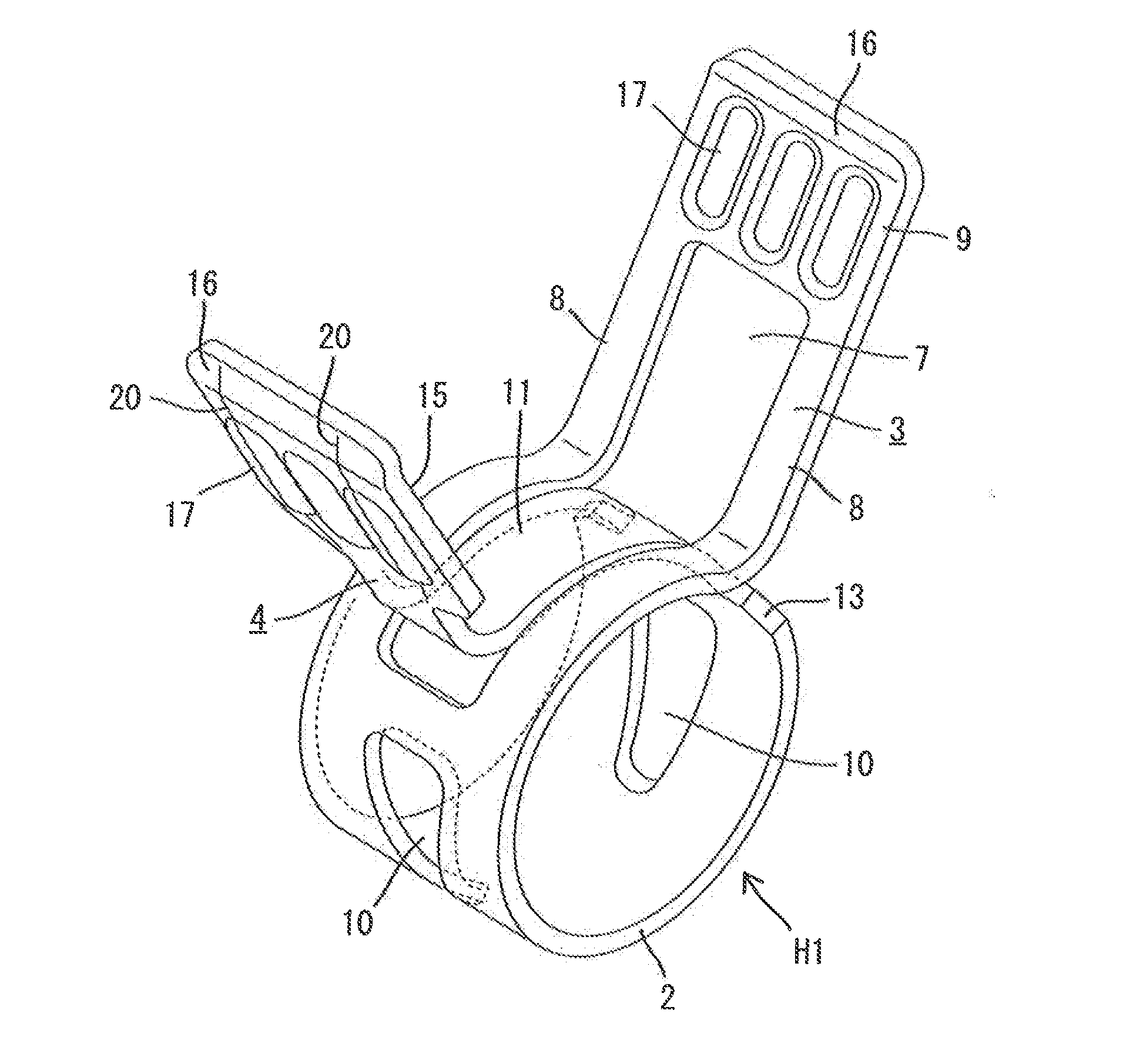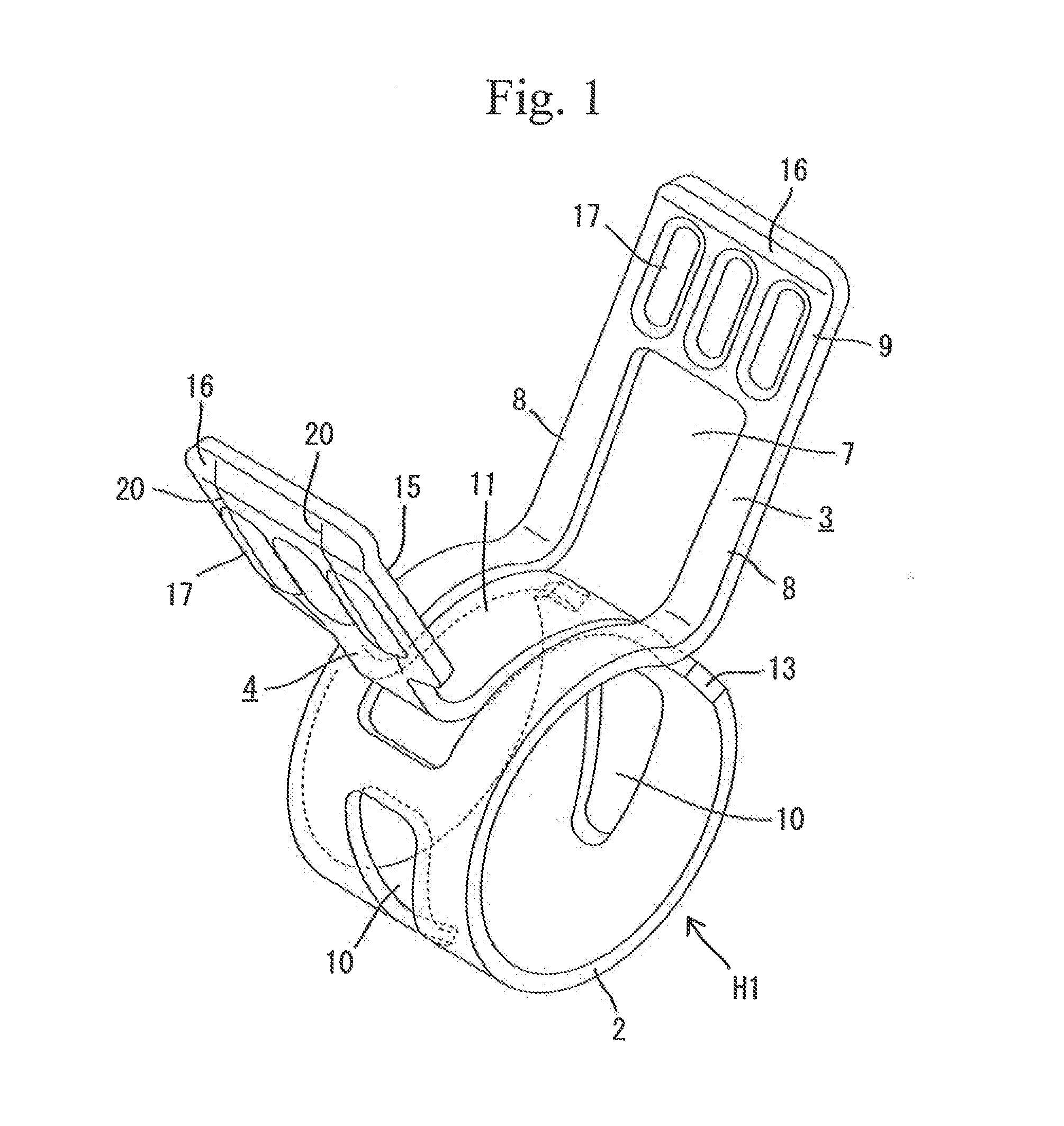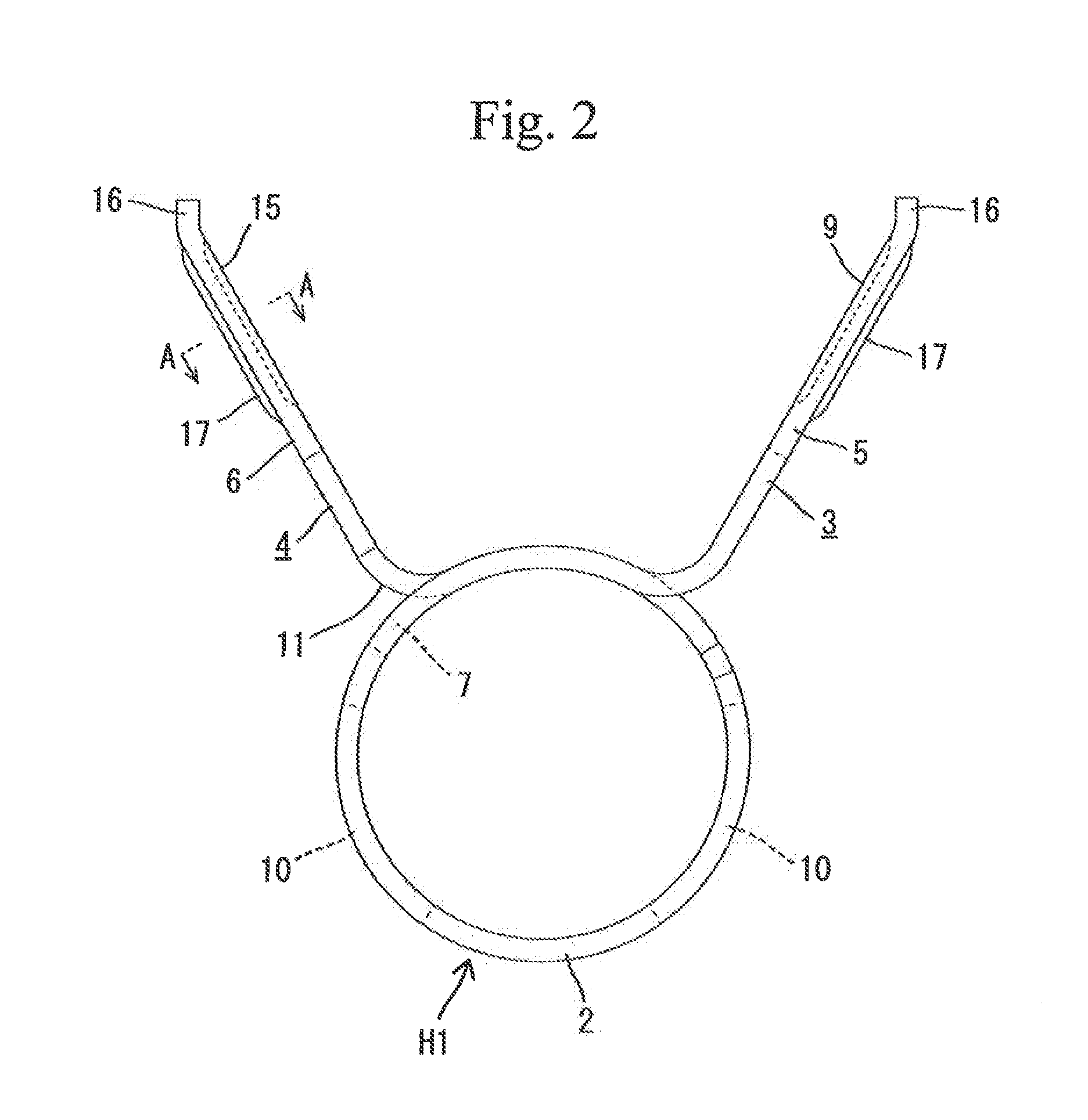Hose clamp and method of manufacturing the same
a technology of hose clamps and hoses, which is applied in the direction of hose connections, metal-working equipment, haberdashery, etc., can solve the problems of difficult pinching operation on the two pinching portions, unbalanced pinching operation, and difficulty in performing pinching operation on the above hose clamps, so as to facilitate pinching operation and expand the operation area
- Summary
- Abstract
- Description
- Claims
- Application Information
AI Technical Summary
Benefits of technology
Problems solved by technology
Method used
Image
Examples
embodiment 1
[0063]In the following, embodiment 1 of the present invention will be described with reference to FIGS. 1 through 6. A hose clamp H1 according to the present embodiment is formed integrally of a plate material consisting of spring steel. As shown in FIG. 4, in the developed state, the hose clamp is formed as a strip extending in the longitudinal direction (along the X-axis direction mentioned below). This strip-like plate material 1 is bent along the X-axis from the developed state into a ring-like configuration to form a tightening portion 2 capable of elastic deformation so as to be reduced and increased in diameter. Both end portions of the hose clamp protrude radially outwards from the tightening portion 2 to respectively constitute first and second pinching portions 3 and 4. The two pinching portions 3 and 4 are opposite each other in the peripheral direction.
[0064]As shown in FIG. 4, the plate material 1 for forming the hose clamp H1 is formed symmetrically with respect to the...
embodiment 2
[0079]FIGS. 7 and 8 show embodiment 2 of the present invention,
[0080]As shown in FIG. 7, the hose clamp H2 according to embodiment 2 has no through-hole 7. In the hose clamp H2 of the present embodiment, a first pinching operation surface 30 and a second pinching operation surface 31 cross each other in the axial direction in a staggered manner. Although the triangular windows 10 of embodiment 1 are not shown in FIG. 7, they may be provided as in embodiment 1,
[0081]The hose clamp H2 according to embodiment 2 is manufactured by the steps shown in FIG. 8. As shown in FIG. 8(I), a plate material 32 in the developed state is of a configuration in point symmetry with respect to the Y-axis (the developed form shaping step). As shown in FIG. 8(I), one side edge in the longitudinal direction of the plate material 32 (the side edge shown on the lower side in the drawing) extends straight along the X-axis from the distal end of a second end portion 34, and reaches a predetermined position bey...
embodiment 3
[0090]FIG. 9 shows a second pinching operation surface 50 of a hose clamp H3 according to embodiment 3 of the present invention; the first pinching operation surface can be formed in the same manner. In the hose clamp H3 of embodiment 3, expansion regions 52 are separate from a proximal region 51 when the plate material is in the developed state. That is, in embodiment 3, the proximal region 51 is caused to singly enter a through-hole (not shown), and then the pair of expansion regions 52 are mounted to both side edges in the width direction of the proximal region 51 by welding or the like via connection edges 53.
[0091]In the present embodiment, the width dimension of the proximal region 51 alone is smaller than the minimum opening width of the through-hole (not shown); however, the outer width dimension of the second pinching operation surface 50 in the state in which both expansion regions 52 have been attached is set to be larger than the maximum opening width of the through-hole...
PUM
| Property | Measurement | Unit |
|---|---|---|
| shape | aaaaa | aaaaa |
| symmetry | aaaaa | aaaaa |
| width | aaaaa | aaaaa |
Abstract
Description
Claims
Application Information
 Login to View More
Login to View More - R&D
- Intellectual Property
- Life Sciences
- Materials
- Tech Scout
- Unparalleled Data Quality
- Higher Quality Content
- 60% Fewer Hallucinations
Browse by: Latest US Patents, China's latest patents, Technical Efficacy Thesaurus, Application Domain, Technology Topic, Popular Technical Reports.
© 2025 PatSnap. All rights reserved.Legal|Privacy policy|Modern Slavery Act Transparency Statement|Sitemap|About US| Contact US: help@patsnap.com



